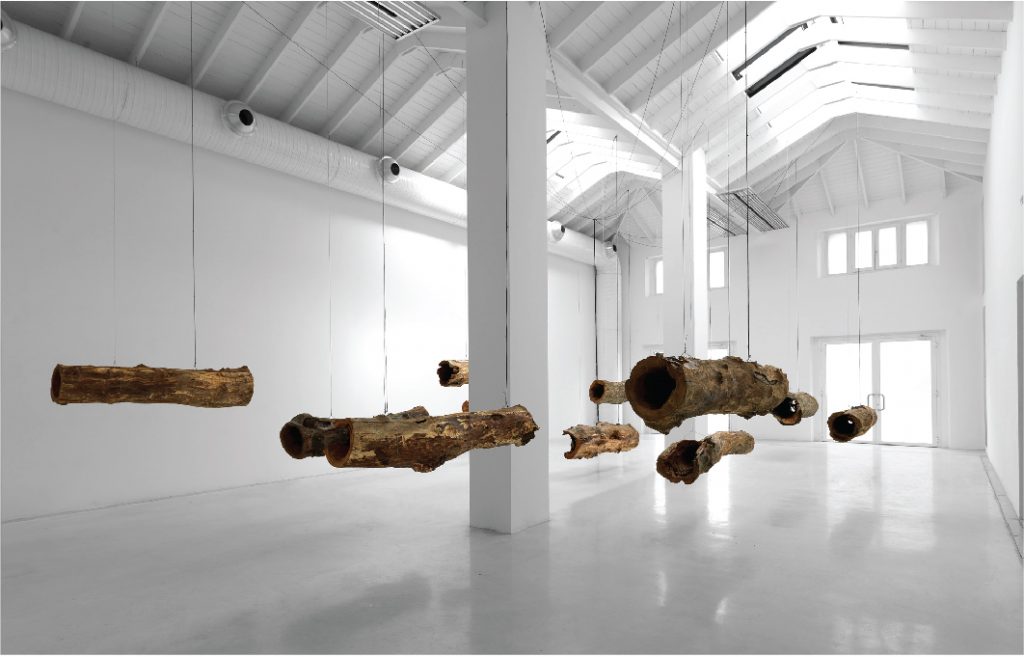
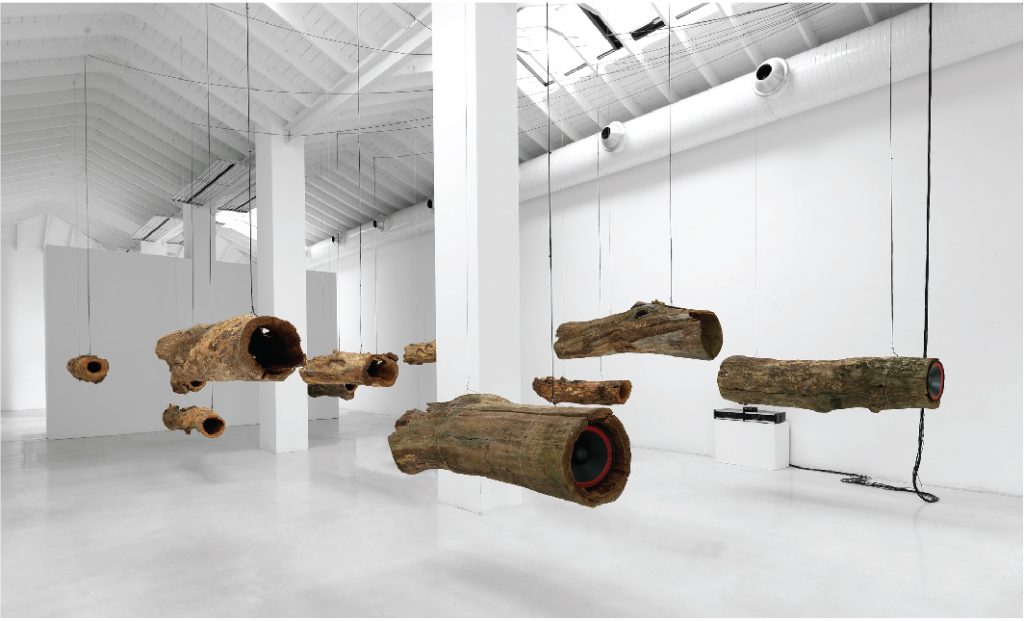
Concerto per natura morta -Installation view chestnut logs, spearkers, audio cables, musical compostion, audio playback system environmental dimensions, 2014 photo Michele Alberto Sereni courtesy Studio la Città, Verona
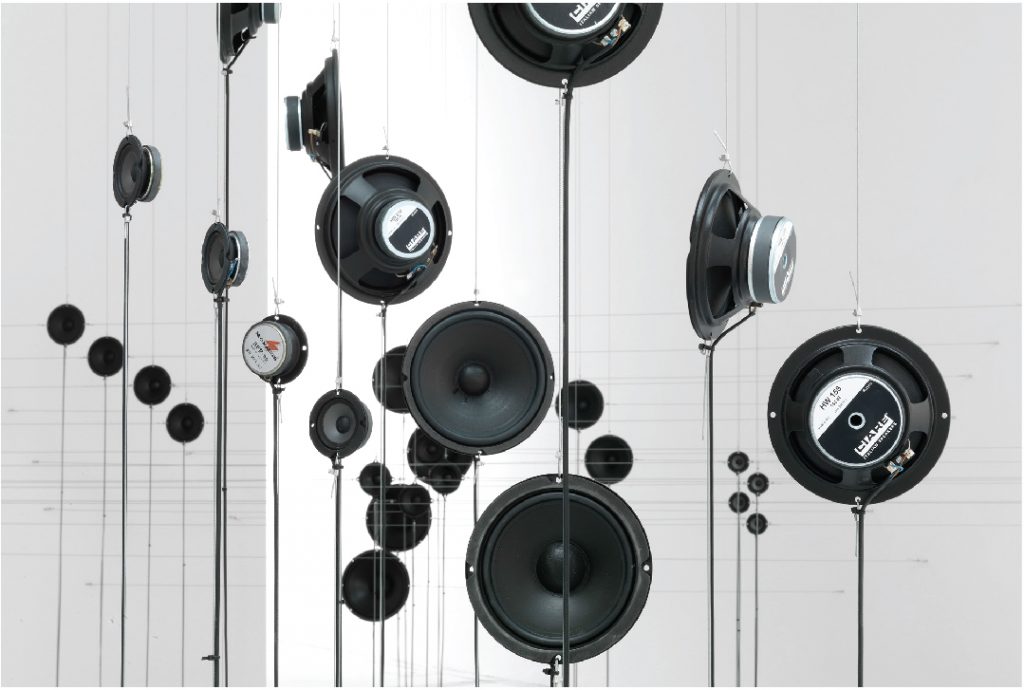 Aritmetiche architetture sonore (detail) 2012
Aritmetiche architetture sonore (detail) 2012
speakers, audio cables, musical composition, audio playback system interactive sound installation – environmental dimensions
photo Michele Alberto Sereni
courtesy Studio la Città, Verona (left)
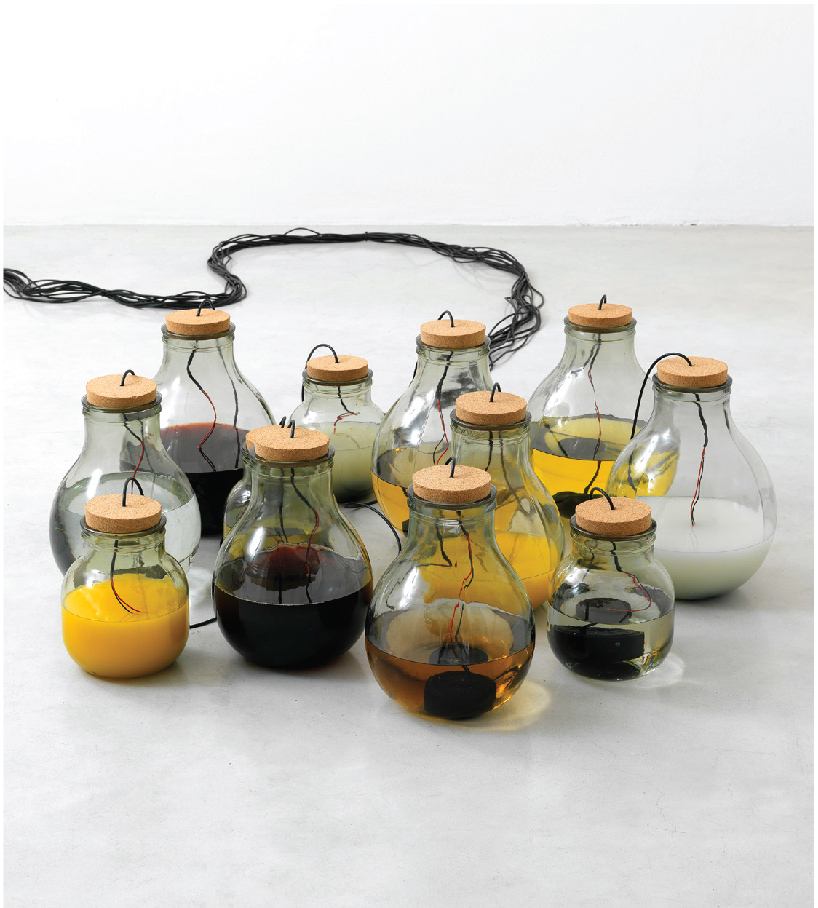 Fluide propagazioni alchemiche
Fluide propagazioni alchemiche
2014
underwater speakers, glass, audio cables, various li-quids, musical composition, audio playback system
photo Michele Alberto Sereni
courtesy Studio la Città, Verona
(right)
In 2014 Roberto Pugliese presented his installation Concerto per natura morta (2014) [1,2] at the Studio la città in Verona (Italy), which can be said to gather together all of the elements composing the artistic identity of the Italian. In a white room, 13 hollow chestnut trunks were suspended horizontally from the ceiling and each contained a complex audio mechanism reproducing natural sounds, creations of the artist himself. His endeavor, based on the traditional iconographic form of still life, was linked to high-end technology and the result was impressive: The sounds reproduced within the space were directly dependent on the morphology of the trunks, reminding the spectator of the complex relationship between contemporary reality and the natural world. Nature and contemporary material, music and natural sounds, technology and tradition constitute concepts harmonically intertwined in his work, although they are considered conceptually antithetic.
Since the beginning of his career, Roberto Pugliese has been interested in the dynamic relationship between sound and art, simultaneously developing a new philosophy on the viewing of a work of art. While still studying electronic music at the Conservatory of San Pietro a Majella (Naples, Italy), he presented his first blueprints for visualizing the dynamics of sound. Immediately after his graduation, he participated in various group exhibitions in Italy and abroad, where his interest focused almost exclusively on the triptych of spectator-sound-work of art. In works, like Critici ostinati ritmici. (2010) [3], where he presents for the first time the idea of the trunk reproducing the sound or Unità minime di sensibilità (2011) [4], in which the natural object is substituted by speakers, circuits, computers and ables, his inquietudes on the consequences of contemporary culture’s intervention on the environment and also on the relationship of man with nature and technology become evident.
He mentions: My research draws its energy mainly from two tendencies in art, sound art and that of the kinetic and programmed art. Using mechanical equipment driven by software that interact with the surrounding environment and the user, I intend to examine new points of research to the phenomena attached to sound, analysis of the processes that use the human psyche structures to differentiate natural from artificial ones (both acoustic and visual), on the relationship between man and technology and the relationship between art and technology, giving a role no less important to the visual aspect.
Indeed, Roberto Pugliese’s work in its entirety constitutes an incessant search which springs from the dynamic of sound and unfolds parallel aspects in various conceptual fields. The use of high-end technology should not be considered a hymn to contemporary culture, but an expressional tool which raises questions on various topics of contemporary life and philosophy. His themes, or rather his thematical sources, are drawn from a wide spectrum of personal research. Sound is certainly one of the artist’s main interests but is never presented alone. Architecture, mathematics and psychology systematically recur in his work and, in combination with the various theories formulated on the importance of sound, Pugliese activates the artistic space and deconstructs the conventional meaning of viewing.
In installations such as Aritmetiche architetture sonore (2012) [5,6], an inquiry into the relationship between architectonic space and sound conveyed by mathematical laws, Echi liquidi (2013), a site specific project for Treviso influenced by the deep relationship that links the city to its rivers or Emergenze acustiche (2014) [7,8], where the artist negotiates the concepts of space, sound and the individual, the spectator is drawn away from the traditional viewing of the work of art and becomes confronted with an experiential condition, activating more than one sense. ‘The idea of creating an active relationship between work and user drives me to create dimensions in which the sound is moving, creating different perspectives sound for the listener. The art comes from a two-dimensional reality to create real sound and/or visual settings. In this way the user is totally immersed in the perceptual worlds that accompany him in a sensorial experience, Roberto Pugliese notes. At this point it should be noted that, apart from his large installations, which we could say are defined by the spectator’s presence and participation, Roberto Pugliese does not alter his approach in the independent, smaller-scale works of art he creates. Also using sound, the Italian artist’s sculptures are focused on the spectator’s activation, delicately balancing between kinetic art and installation art. In this category do works such as Risonanti pressioni materiche (2014)[9] and Fluide propagazioni alchemiche (2014)[10] belong.
Roberto Pugliese takes a humanistic approach towards contemporary art. He is interested in a variety of themes and techniques which flow and whirl in a perennial seeking. It wouldn’t be an exaggeration to characterize him as an artist-researcher who constantly seeks new ways to disrupt the conventional art equilibrium, adopting a personal artistic vocabulary.
Artist’s bio
Roberto Pugliese was born in Naples, Italy in 1982. In 2008 he graduated from the Conservatory of San Pietro a Majella (Naples, Italy), where he studied electronic music and developed his first strategies for visualizing the dynamics of sound. Immediately after his graduation, he participated in various group exhibitions in Italy and abroad including the Second Biennale of Young Art, Academy of Fine Arts, Bologna, curated by Renato Barilli (2008), the Condotti cronoarmonici, Galerie Mario Mazzoli, Berlin (2010) and the Los Maquinistas, c arte c Museum, Madrid (2013) among others. Since 2009, Pugliese’s work has been featured in numerous solo exhibitions in Italy, Spain, Germany and the U.S.A. (2014, Concerto per natura morta, Muse, Trento| 2013, Emergenze acustiche, Tenuta dello Scompiglio, Vorno, Capannori ( Lucca )| 2012, Gervasuti Mix, omaggio a Cage, Gervasuti Foundation, Venice | 2012,Volta NY, New York | 2011 Unexpected Machines, Galerie Mario Mazzoli, Berlin). He has received awards, including an honourable mention at the 2013 Ars electronica, Linz and a special mention at the 2012 Vida 14, Telefonica Fundaciòn, Madrid. He currently lives in Gavi, Province of Alessandria (Italy).
Images are courtesy of the artist and Studio la Città.
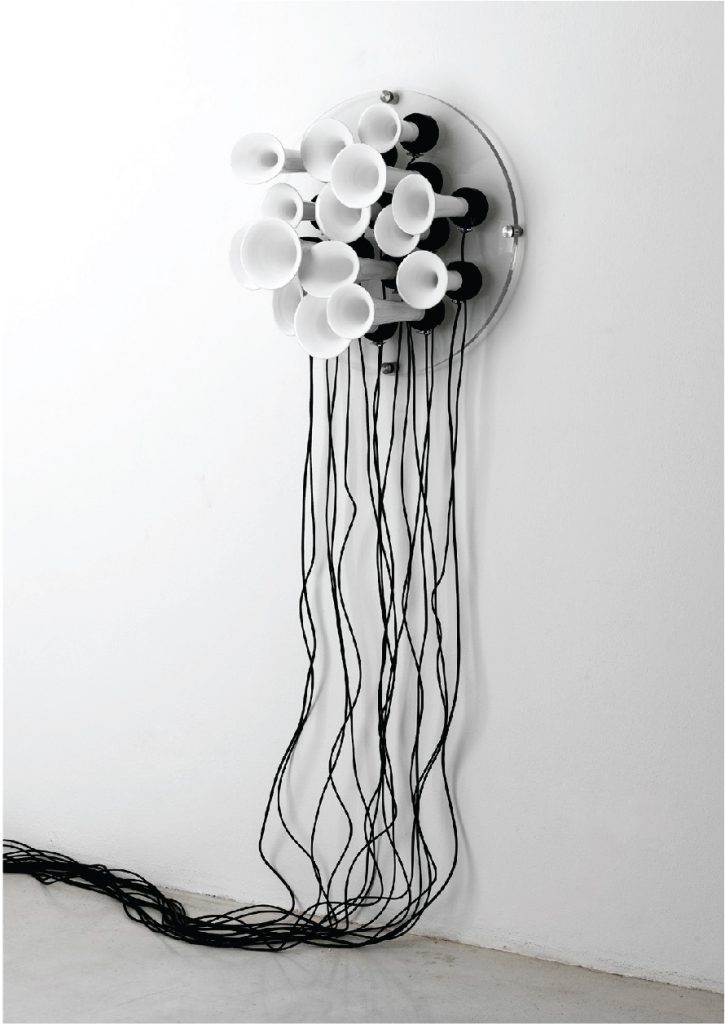
Risonanti pressioni materiche 2014 ceramic trumpet, plexiglass, musical composition, audio playback system
photo Michele Alberto Sereni
courtesy Studio la Città, Verona
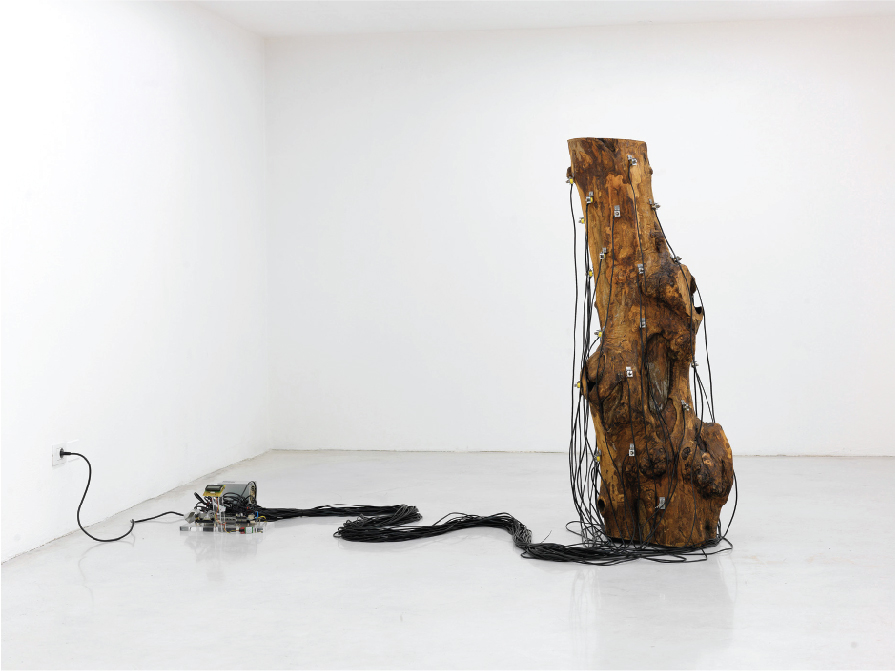
Critii ostinati ritmici 2010
wood, microcontroller, electromagnets cloak,
software, sensors and wireless Internet


